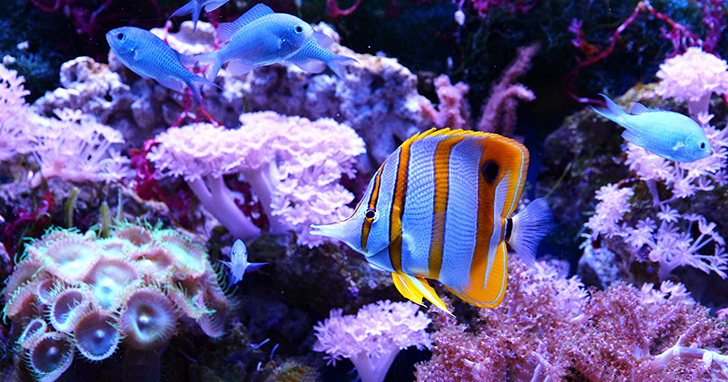
How to Cure Live Rock?During the shipping process of all live rock, either precured or uncured, some die-off will occur. For this reason, all live rock must be cured again, before it is placed in marine aquariums that contain fish, corals, or other marine animals.? Why cure live rock?
Live rock must be properly cured to create a healthy marine environment. The biodiversity found on all transported live rock undergo some degree of natural die-off, especially delicate or damaged fauna and flora. As these encrusting organisms go through the process of being transported, they produce a large amount of waste materials. Without proper curing, pollutants, and toxic compounds such as ammonia are released into the water and compromise the health of your entire aquarium system. Whether pre-cured or uncured, it is crucial to never introduce any live rock to an established aquarium containing fish, corals, or other marine animals unless it has been properly cured.? How do you cure live rock for a stocked aquarium??
importance :Do not place uncured live rock directly into an aquarium containing fish, corals, or other marine animals.? Note :Be sure to use gloves when handling live rock to prevent accidental cuts and potential infection. Method A:Curing process of live rock for the established display aquarium that already contains fish, corals, or any other marine animals.?
Most live rock will be fully cured in 1-3 weeks; at which time it is safe to add to the display aquarium.? How do you cure live rock for an aquarium that is not stocked??
Method B: Curing process of live rock for the new aquarium that DOES NOT contain fish, corals, or any other marine animals.? Live rock may be used to cycle a new marine aquarium. Follow the manufacturer's directions on the installation of all filtration devices and accessories. Fill the aquarium with freshly mixed saltwater with a specific gravity of 1.023-1.025. Activate all filtration equipment, check for leaks, and set heater and/or chiller to the desired temperature of 72-78°F.? Note: Mechanical filtration will need frequent cleaning during this cycling process.
Most aquariums will cycle within 2-4 weeks using this technique, depending on the equipment that is installed.? How do I get rid of hitchhikers on my live rock??
Submerse the new rock into a bucket filled with saltwater with a specific gravity of 1.035 to 1.040 for one minute. Any invertebrates including mantis shrimp, bristle worms, and crabs will quickly evacuate from the rock and into the bucket of water.? Remove the live rock from the bucket and sort through the invertebrates in the bucket. Determine those you want to add to your system and discard unwanted pests. Bristle worms still attached to the rock can be removed with a pair of needle-nosed pliers or tweezers. This technique can be used to remove unwanted pests before or after curing your newly arrived live rock.? Related Articles
|
|
|


